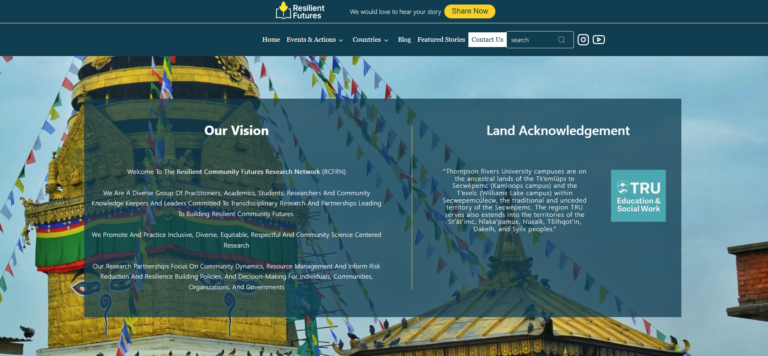Simulated Client Records

Faculty/Staff: Pinder Nagra and Devon Graham
Platform: WordPress
Site link (if applicable): https://simulatedclientrecords.trubox.ca
Services provided: Site domain/setup, website design/layout, and platform support
Description: The Simulated Client Chart Database project is an open-source patient chart resembling an Electronic Medical Record (EMR) to enrich the student learning experience. The platform will be accessible to multiple disciplines, fostering collaboration and inclusivity. It will allow students to access patient charts from anywhere, promoting flexibility in learning. Additionally, it will facilitate capacity building for faculty by providing a base template for creating patient profiles, encouraging innovation and diversity in educational approaches. The project involves creating a website to host open-source patient charts, developing a template for customizable charts, and providing faculty development resources in medical informatics. The initiative aligns with TRU’s commitment to preparing students for real-world challenges and continuous improvement in education.
We’re proud to share that this project received the 2025 OEGlobal Award for Excellence in the “What We Share: Open Assets Award” Category!
Impact Summary
- Used in course(s): NURS 2740, NURS 2740 Simulation, NURS 3740 Simulation, NURS 2840 Simulation
- When: Fall 2024
- Note: three other colleagues at TRU may also be using this resource
- Estimated number of students using textbook(s): 150 students (NURS 3740) + 150 (NURS 3740) + __ (NURS 2840)
- Average price of textbook or resource replaced:
- The cost of a nursing-related textbook in Canada typically ranges from $50 to $250, depending on the format (print or digital) and publisher. For this project, we are using a conservative estimate of $75 for a high-quality resource that not only provides comprehensive content but also integrates a simulation experience. This format is designed to replicate the structure and experience that nurses and other health practitioners will encounter when working with patient charts, enhancing their readiness for real-world clinical practice.
- Estimated savings: $100 x 300 students = $3,000
- Other Institutions Using this resource: n/a
- Promoted/ will be promoted: 3 conferences in Canada
Impact Evaluation
Written by Ananya Kamboj
Devon Graham, an assistant teaching professor at the School of Nursing, and Pinder Nagra, a teaching assistant professor within the same program at Thompson Rivers University (TRU) developed an innovative project named: Simulated Client Chart Database. Their goal was to address a noticeable gap in students’ experience with electronic health records (EHR) in clinical settings by developing a project that integrates these tools into their curriculum.
Devon and Pinder highlighted the significant benefits this database offers to students and the broader community. For decades, the healthcare system has been transitioning towards electronic patient information systems, yet nursing education has lagged behind, still relying on paper-based charting. This open – source patient database aims to align educational practices with the realities of modern healthcare by providing students with hands-on practice using EHRs. The shift from paper to electronic records not only mirrors the current healthcare environment but also enhances the quality and robustness of students’ training.
The Simulated Client Chart Database focuses on technological proficiency, allowing students to gain experience with accessing and managing patient information through electronic records. This skill is critical as healthcare increasingly depends on digital tools. Furthermore, the developed database includes diverse patient case studies, enriching the learning experience by offering a wide range of scenarios for students to study and learn.
The client chart database is globally accessible to anyone interested in healthcare and nursing education. Educators worldwide can contribute to and benefit from the database, creating a diverse and comprehensive repository of mock patient information. This open-access resource promotes standardized templates for patient information, making learning more efficient and accessible through various modalities, including mobile devices and text-to-speech options.
The project’s inclusivity extends to interprofessional collaboration. Social work, for example, could integrate their reports into the database, providing a holistic view of patient care that includes nursing, medical, and social perspectives. This collaborative approach enhances the learning experience and prepares students for real-world, multidisciplinary healthcare environments.
In terms of sustainability and maintenances, the database can be continuously updated with new cases added and incorporating student feedback to improve the system. Toolkits and user guides will be developed to facilitate the easy addition of new cases, ensuring the project’s longevity and relevance. Devon and Pinder emphasized the importance of creating a user-friendly system that encourages widespread participation and sharing of valuable educational resources.
Reflecting on their experience working with the TRU Open Press, Devon and Pinder expressed immense gratitude for the support and enthusiasm they received. The Open Press team made the development process seamless, handling any challenges with compassion and positivity. Their collaborative efforts resulted in a valuable educational tool that promises to significantly enhance nursing education.
In short, this innovative project not only bridges the gap between nursing education and modern healthcare practices but also fosters a collaborative and inclusive learning environment. By providing students with practical experience using electronic health records and building a diverse repository of case studies, the project equips future nurses with the skills and knowledge they need to excel in their professional roles. The success of this project underscores the power of collaboration and the importance of integrating technology into education to prepare students for the evolving demands of the healthcare industry.







